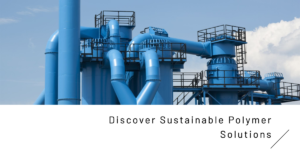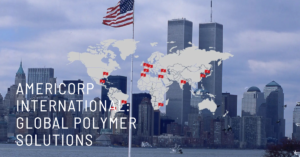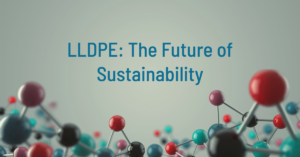Table of Contents
- Introduction
- Composition and Molecular Structure of EVA
- Polymerization Techniques for EVA
- Advanced Properties and Characteristics
- Engineering Applications of EVA Resins
- Innovations in EVA Film Manufacturing
- Analyzing EVA Market Trends: 2023 and Beyond
- Challenges in EVA Research and Development
- Sustainability Practices in EVA Production
- EVA Resins & Films: Case Studies in Technical Excellence
- Conclusion
- Additional Technical Resources
1. Introduction
Welcome to an in-depth exploration of the technical nuances behind EVA (Ethylene Vinyl Acetate) resins and films. In this technical deep dive, we aim to dissect the molecular structure, delve into advanced polymerization techniques, and scrutinize the engineering applications that make EVA a standout in the polymer industry.
2. Composition and Molecular Structure of EVA
EVA Composition
EVA is a copolymer derived from ethylene and vinyl acetate monomers. The varying composition of vinyl acetate within the polymer chain significantly influences its physical and chemical properties.
Molecular Structure
- Random Distribution: The random arrangement of ethylene and vinyl acetate units imparts unique properties to EVA.
- Chemical Bonds: Covalent bonds between carbon atoms create the polymer backbone, ensuring stability and resilience.
3. Polymerization Techniques for EVA
High-Pressure Polymerization
EVA is primarily synthesized through high-pressure polymerization techniques, leveraging free radical initiators. This method allows for the creation of a diverse range of EVA grades with varying vinyl acetate content.
Innovations in Polymerization
Ongoing research explores novel polymerization techniques, including:
- Metallocene Catalysts: Precision in controlling the polymer’s architecture.
- Reactive Extrusion: Enhancing process efficiency and polymer properties.
4. Advanced Properties and Characteristics
Rheological Properties
EVA exhibits unique rheological characteristics:
- Non-Newtonian Flow: Flow behavior dependent on shear rate.
- Viscoelasticity: Combining viscous and elastic properties.
Thermal Behavior
- Melting Point: Varied melting points based on vinyl acetate content.
- Heat Resistance: EVA’s ability to withstand high temperatures without significant degradation.
Stay tuned as we navigate through the engineering applications showcasing EVA’s technical prowess.
5. Engineering Applications of EVA Resins
Automotive Industry Insights
- Interior Components: EVA’s resilience and durability make it an ideal material for automotive interior components such as dashboards and door panels.
- Sealing and Gaskets: EVA’s excellent sealing properties contribute to its use in manufacturing automotive seals and gaskets.
Electrical Industry Applications
- Wire and Cable Insulation: EVA’s electrical insulation properties make it a preferred material for wire and cable insulation.
- Encapsulation of Electronic Components: EVA’s encapsulation capabilities provide protection to delicate electronic components.
Footwear Manufacturing
- Sole Cushioning: The flexibility and shock absorption qualities of EVA make it a staple in the production of comfortable shoe soles.
- Molded Components: EVA’s moldability allows for intricate designs and customized components in footwear.
6. Innovations in EVA Film Manufacturing
Multilayer Film Technology
The incorporation of multiple layers in EVA film manufacturing offers:
- Enhanced Barrier Properties: Improved resistance to moisture and gases.
- Customization of Physical Properties: Tailoring each layer for specific functionalities.
Nanotechnology in Film Production
- Nano-Additives: Integration of nanoparticles for improved mechanical and thermal properties.
- Barrier Coatings: Nanotechnology enhances EVA films’ barrier capabilities, expanding their applications in packaging and beyond.
7. Analyzing EVA Market Trends: 2023 and Beyond
Technological Advancements
- Smart EVA: Integration of sensors and responsive technologies in EVA applications.
- 3D Printing with EVA: Exploring the potential of EVA in additive manufacturing processes.
Market Expansion
- Medical Industry: Growing usage of EVA in medical devices, including catheters and tubing.
- Renewable Energy Sector: Increased adoption of EVA films in solar energy applications.
8. Challenges in EVA Research and Development
Environmental Impact
- Recycling Challenges: Addressing issues related to the recycling of EVA products.
- Eco-Friendly Alternatives: Research focused on developing sustainable alternatives to traditional EVA formulations.
Regulation and Standardization
- Compliance Challenges: Navigating evolving regulatory frameworks for polymer materials.
- Industry Standards: The need for standardized testing methods for EVA products.
Stay tuned as we explore sustainability practices in EVA production, offering a glimpse into the industry’s commitment to environmental responsibility.
9. Sustainability Practices in EVA Production
Recycling Initiatives
- Closed-Loop Systems: Companies are exploring closed-loop systems to efficiently recycle post-consumer and post-industrial EVA waste.
- Material Repurposing: Investigating methods to repurpose recycled EVA materials into new products, minimizing environmental impact.
Eco-Friendly Formulations
- Bio-Based EVA: Research into incorporating bio-based feedstocks in EVA production to reduce reliance on fossil fuels.
- Green Additives: Utilizing environmentally friendly additives without compromising EVA performance.
Carbon Footprint Reduction
- Energy-Efficient Manufacturing: Implementing energy-efficient processes to reduce the carbon footprint of EVA production.
- Life Cycle Assessments: Conducting thorough life cycle assessments to identify and mitigate environmental impacts at every stage.
10. EVA Resins & Films: Case Studies in Technical Excellence
Case Study 1: Automotive Applications
- Challenge: Developing EVA formulations with enhanced fire resistance for automotive interiors.
- Solution: Collaborative efforts led to the creation of fire-resistant EVA blends meeting industry safety standards.
Case Study 2: Nanotechnology Integration
- Challenge: Improving the mechanical strength of EVA films for specialized packaging applications.
- Solution: Nanoparticle incorporation resulted in a significant enhancement of film tensile strength and barrier properties.
11. Conclusion
In this technical deep dive into EVA resins and films, we’ve dissected the intricate aspects of their molecular structure, explored advanced properties, and scrutinized engineering applications. From innovations in film manufacturing to sustainability practices, the technical landscape of EVA is vast and continually evolving.
Key Insights:
- Engineering Versatility: EVA’s adaptability finds applications across diverse industries.
- Innovations Driving Growth: Ongoing advancements in polymerization and film technologies fuel the EVA market’s expansion.
- Commitment to Sustainability: The industry’s dedication to sustainable practices positions EVA as a responsible choice.
As we conclude this technical exploration, join us in the next section for additional technical resources, providing further depth to your understanding of EVA resins and films.
12. Additional Technical Resources
- Advanced Polymerization Techniques in EVA Manufacturing
- In-depth insights into cutting-edge polymerization methods.
- Nanotechnology Applications in EVA Films
- Exploring the nanoscale innovations shaping EVA film properties.
- Sustainability Metrics in Polymer Production
- A comprehensive guide to evaluating and improving the sustainability of polymer manufacturing processes.
- EVA Resins & Films Technical Handbook
- A detailed handbook covering technical specifications, formulations, and applications.
Feel free to explore these resources to deepen your technical knowledge of EVA resins and films. We appreciate your technical journey with us and look forward to the continual evolution of this dynamic field.








